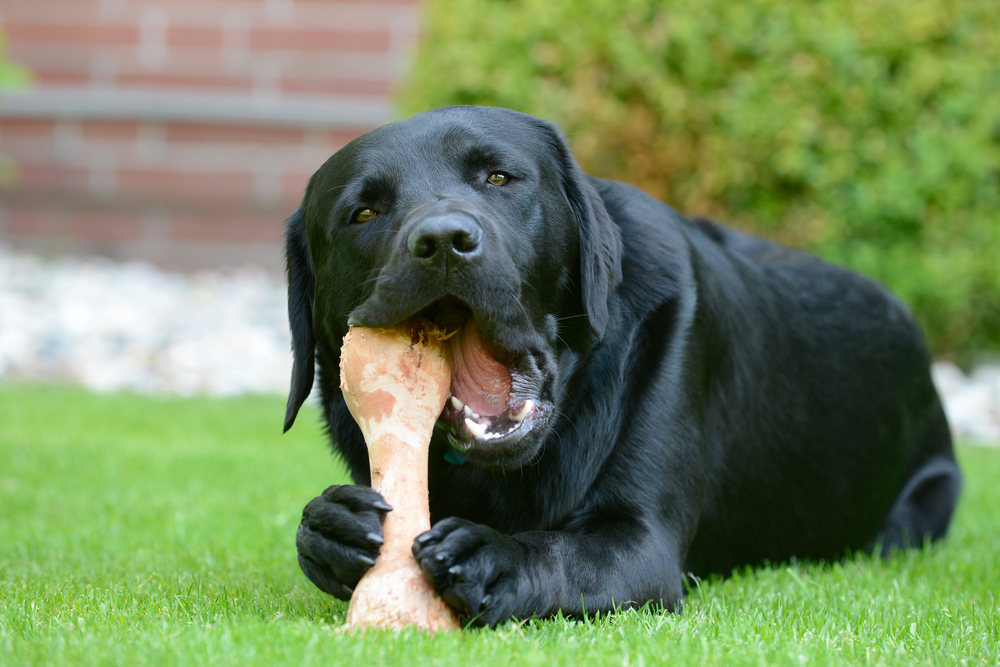Wherever you are in the world, the moment bones are mentioned, a dog comes to mind. After all, even advertisements, movies, and dog food labels associate dogs with bones, regardless of the fact that more humans chew on bones than dogs.
The question is, which types of bones are good for dogs, if any? The Food and Drug Administration (FDA) says bones, whether large or small, are not good for dogs.
They don’t specify if that only applies to cooked bones.
However, many experts say, yes, dogs can eat bones, but there are certain types that you shouldn’t give to them under any circumstances.
Bones from chicken (or any form of poultry) and pork, as well as cooked bones in general, are prohibited.
Choking and significant mouth, throat, or gut damage can result from the fragments that break off.
Table of Contents
How to ensure that your dog chews the correct kind of bone
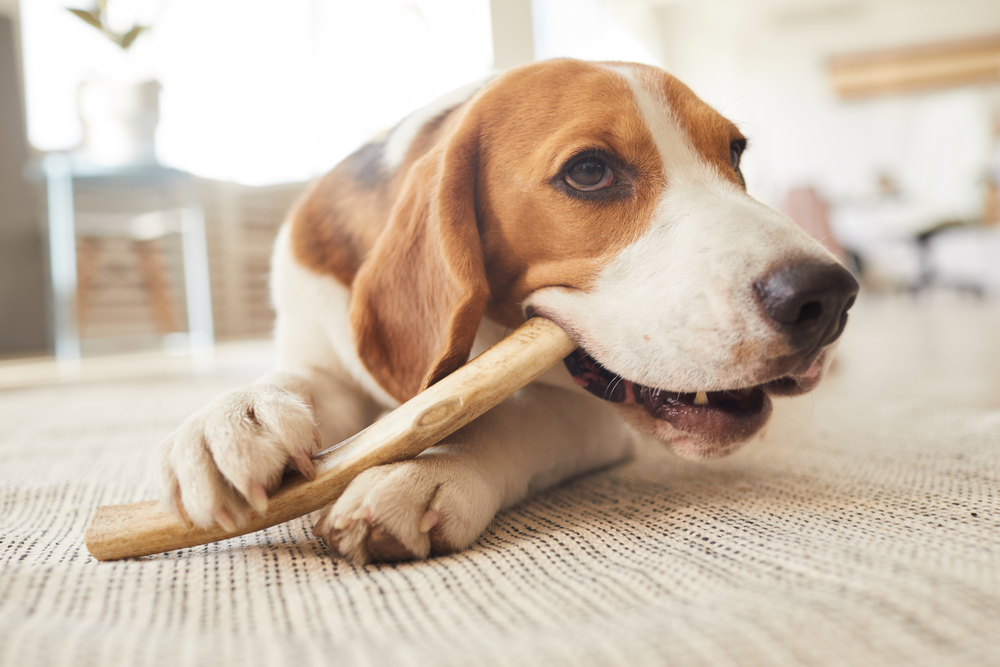
A few decades ago, people didn’t think twice about what they offered their dogs. Their dogs ate anything and everything that was thrown at them.
However, we urge you to proceed with caution while dealing with bone products. Talk to your vet, do your research, and train your dog not to grab bones from the table, empty plates, trash, etc. to make sure that they are not chewing on the incorrect types of bones.
What are the benefits of giving our pets chewing bones?
Providing your dog with bones is a fantastic way to supply it with minerals and other nutrients, as well as fulfill its hunger.
Gum disease and plaque development are both prevented by chewing, which stimulates your dog’s saliva enzymes.
A dog that is gnawing on a bone is less likely to scratch as well as lick its paws persistently.
Why is it vital to prevent our dogs from chewing on the wrong type of bones?
If bitten into small fragments, a bone can cause intestinal blockage, lacerations to the mouth and internal organs, or even death through lodgment in the throat.
When is it best to give my dog a bone?
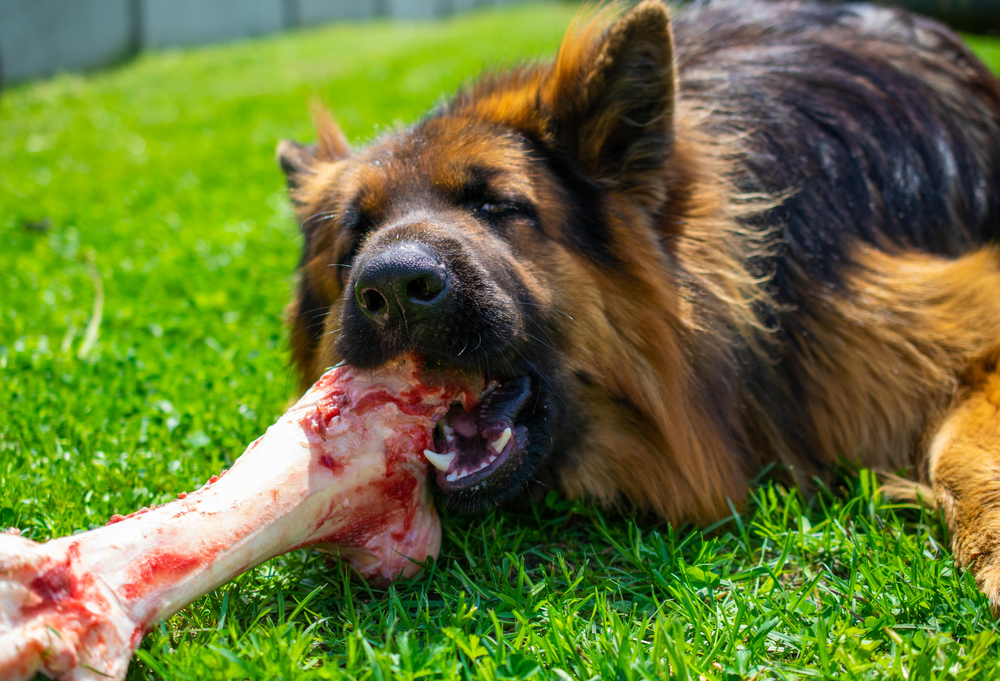
Giving the dog a bone after feeding is the finest option. Ideally, you don’t want your dog to consume a lot of bones.
Large dogs, such as Mastiffs, Bloodhounds, and German Shepherds, should have extra-large bones provided for them.
Larger bones are better for dogs because they are more difficult for them to swallow. Bones such as beef shanks are appropriate for large dogs.
Do I need to supervise my dog while it chews on bones?
Keep an eye on your dog when it’s chewing a bone to make sure he isn’t hurting himself. Although many physicians are divided on the subject, pet owners should err on the side of caution by providing their dogs with only commercially provided chew toys as well as imitation bones.
Why are cooked bones considered dangerous?
A veterinarian in the FDA’s Center for Veterinary Medicine, Dr. Carmela Stamper says. “Bones, no matter how big or small, are dangerous.”
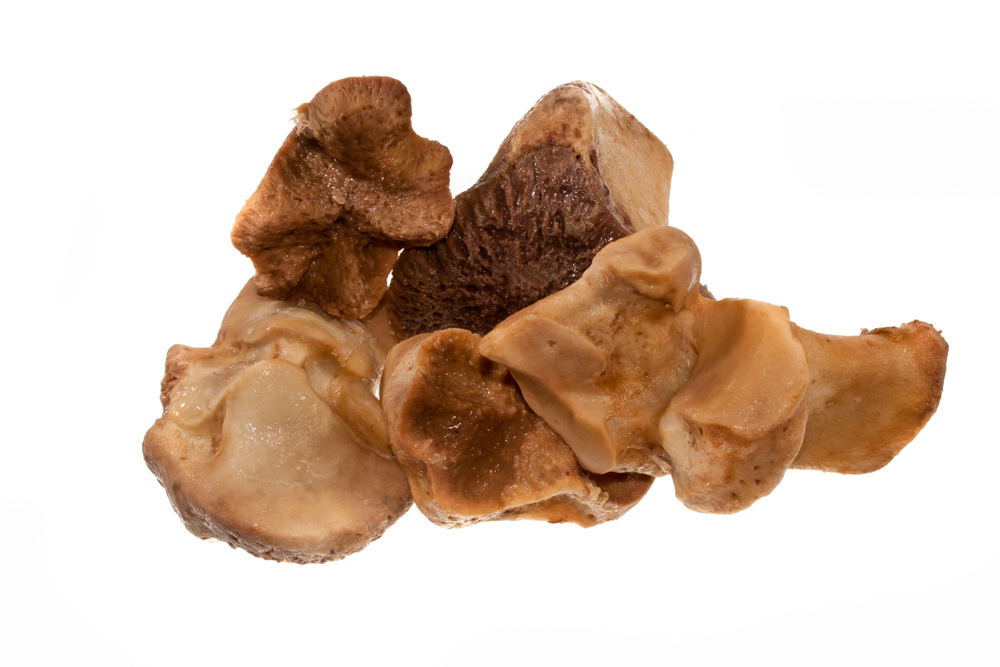
Bones become more brittle during the cooking process, increasing the risk that they will splinter and injure your dog.
In addition to destroying the nutrients in bones, cooking them depletes them of flavor and texture.
Giving your dog a cooked bone to gnaw on can pose the following dangers, according to the FDA:
- Peritonitis
- Teeth that are broken
- Injuries to the tongue or mouth
- Your dog’s bottom jaw becomes entangled in a bone
- Bone gets lodged in the esophagus
- Bone getts stuck in the windpipe
- This happens when a bone gets lodged in the intestine
- An obstruction in the intestines is caused by bone becoming lodged there
- Bone fragments have caused constipation
- Severe rectal bleeding
Are there any bones that are safe for my dog?
Your dog can eat raw bones if they are provided correctly.
Your dog’s forebears and wild cousins have been eating bones for millennia, and you presumably already know this.
All the parts of a prey animal are consumed by canines in their natural habitat. The bone marrow and the bones themselves are biologically necessary for your dog.
Dogs enjoy chewing on raw bones for a variety of reasons, including the delicious taste, mental stimulation, and physical exercise that it provides.

What types of raw bones do vets recommend?
The recommendation of many veterinarians is that dog owners split bones into two categories:
- Bones to eat(edible)
- Bones that can be used for fun (recreational)
Birds have hollow bones that do not bear the weight that is used for food (typically turkey neck, chicken, and chicken wings).
Unlike other bones, they are flexible, bendable, and have no marrow inside. Your dog’s raw food diet can benefit greatly from the phosphorous, calcium, phosphorus, and trace elements found in these bones. However, they should not be given to your dog just from the dinner table. Seek out pet-safe versions of these bones before giving them to your dog.
Recreational bones, which are large portions of bison or beef bones or even bones from the hip loaded with marrow, aren’t particularly nutritive for one’s pet (as they’re not meant for consumption but simply for gnawing on), but they do provide cerebral stimulation and are beneficial to your pup’s oral health.
How do raw bones help your dog’s teeth?
Raw animal bones give your dog’s teeth the equivalent of a good brushing and flossing, especially if they are meaty and still have cartilage and soft tissue.
This minimizes the risk of gum disease by breaking down tartar on their teeth.
In the wild, dogs’ teeth and gums are in perfect condition. To clean their teeth, they eat a lot of prey that needs a lot of chewing, and the sinewy composition of their prey aids this process.
What are the safest ways to give my dog a recreational bone?
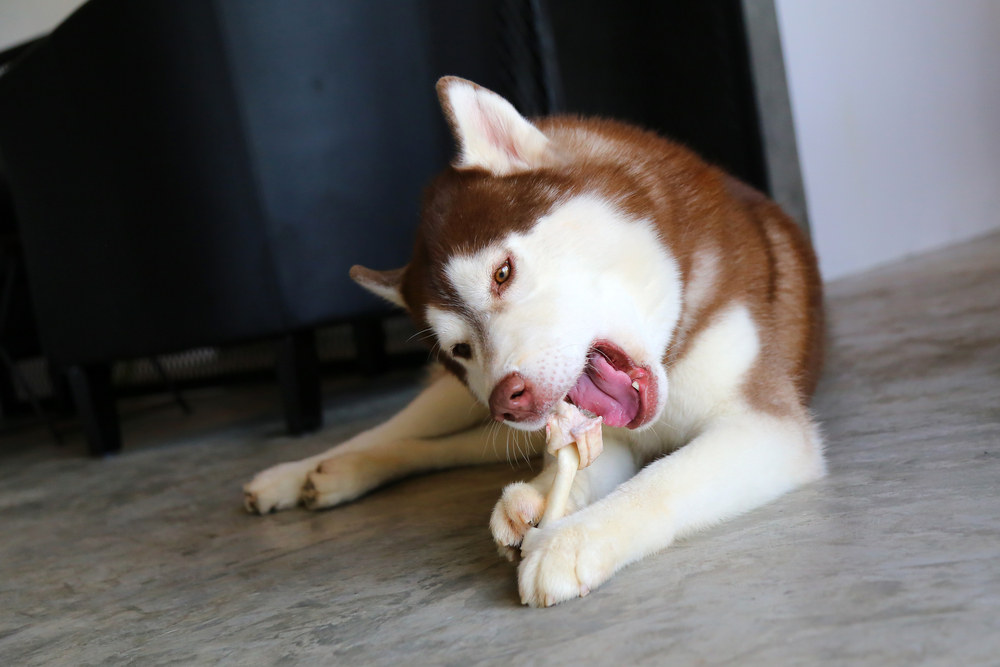
If your dog has unfettered, unsupervised access to recreational raw bones, the health problems stated above also apply.
Dos and don’ts for feeding your dog recreational raw bones
Do keep an eye on your dog while he’s gnawing on a piece of meat. Be prepared to intervene quickly if your dog chokes or if you see blood on the bone or in the area around your dog’s mouth as a result of a violent gnawing session.
Splinters are more likely to occur when your dog has eaten down to the hard, brittle section of a knuckle bone.
After it has been gnawed to a manageable size, toss it.
How do you feed dogs bones when you have multiple dogs?
Before giving a bone to a dog in a multi-dog household, separate them. Dogs can get territorial over bones and even fight over them.
Serve each dog its raw bone in its own crate or a space that is designated for it alone. Ideally, make sure this area or surface is one that can be cleaned easily.
When your dog first gets his hands on some fresh raw bones, they’re a sticky, greasy mess.
Protect your floors and furniture while your dogs are chewing. Avoid giving them to dogs who have recently undergone dental work, such as receiving crowns.
Should a dog with pancreatitis eat bones?

Dogs with a history of pancreatitis should avoid them. Taking raw bone marrow might cause diarrhea and pancreatitis flare-up.
By freezing the bone and removing the marrow, you can feed a “low-fat” variant that has a lower fat content.
A dog that is prone to consume it whole as well as bite it in half and consume large parts should not be given a pleasure bone.
How do you teach a dog to chew on bones correctly?
One vet says the very first time she served her Pitbulls raw bones, they tried to consume both sides at once by biting them in half.
As a result, she bought knucklebones the size of their heads, and they were unable to expand their jaws wide enough to bite down and break off large parts of the bones.
She eventually got them to chew on larger femur bones less forcefully after a lot of repetition and exercising patience.
Can I get a bone from the butcher shop for my dog?
Raw knucklebones (branded as “soup bones”) should be available at your local butcher shop or supermarket meat department.
Feed your dog one frozen bone at a time once you bring it home from the store.
When your dog is done eating, I recommend giving her a bone to gnaw. Bones can be swallowed whole or broken into smaller pieces by hungry dogs.
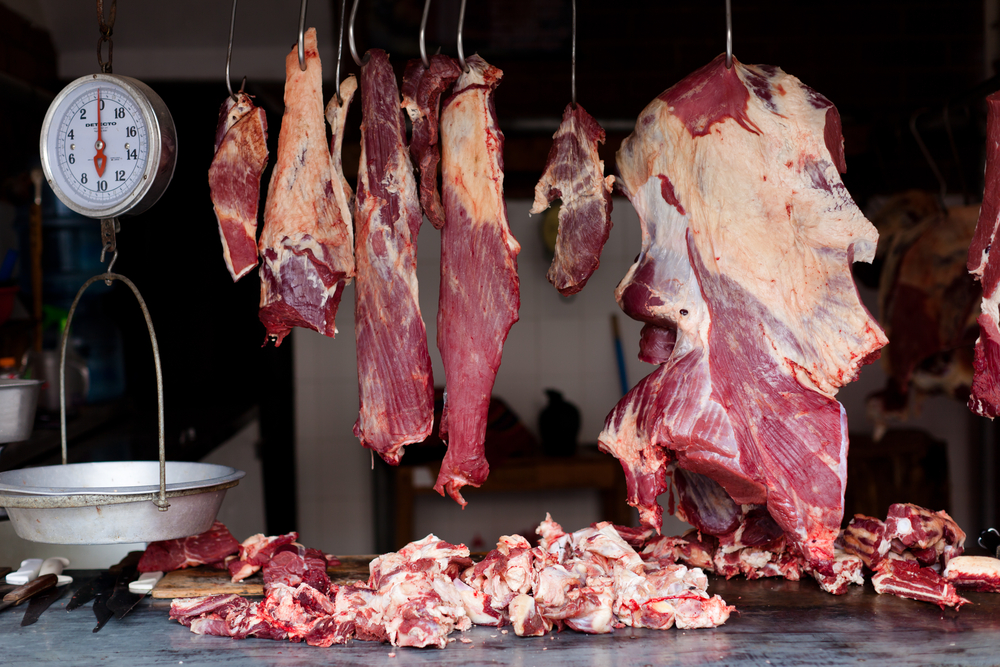
Obstruction of the digestive tract is more likely as a result of this.
To avoid choking, do not give your dog a leg bone that has been sliced into smaller pieces.
When a bone is cut, it is more prone to splintering.
Pork bones and rib bones should not be fed to dogs as they splinter more easily than other bones.
What are good alternatives to raw bones?
If you can’t give your dog raw bones because of one of the diseases listed above, you might want to consider giving him an edible dental bone instead.
The mechanical abrasion provided by a high-quality dental dog chew helps manage dental plaque and is comparable to what a dog would experience if it ate entire, raw food in the wild.
Chewing bones that can’t be broken down pose the risk of intestinal obstruction if they’re swallowed whole or in large enough pieces.
In addition, many traditional dog treats contain carcinogenic additives and preservatives, including gelatin and artificial sweeteners.
What are the best-recommended bones for dogs?
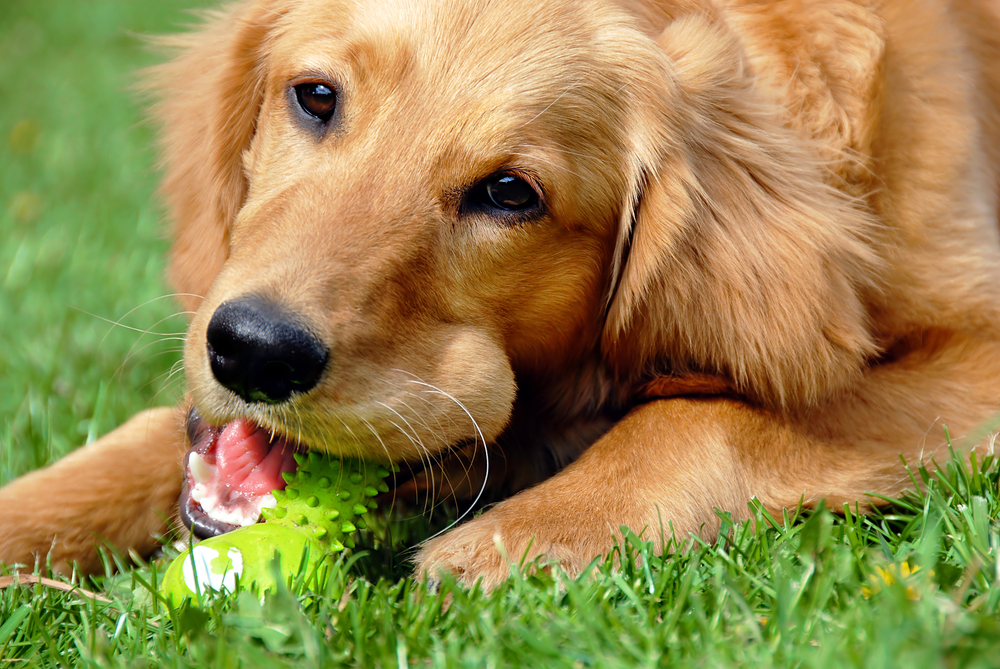
Experts strongly recommend a high-quality dog dental bone that is completely natural and does not contain any animal byproducts, sugar, extra fat, gluten, soy, or corn of any kind.
If you go for raw bones, a high-quality dog dental bone, or perhaps a mixture of the two, remember that your canine family member was born to gnaw on something.
It gives them the ability to brush and floss as nature intended and keeps their jaw muscles in shape.

